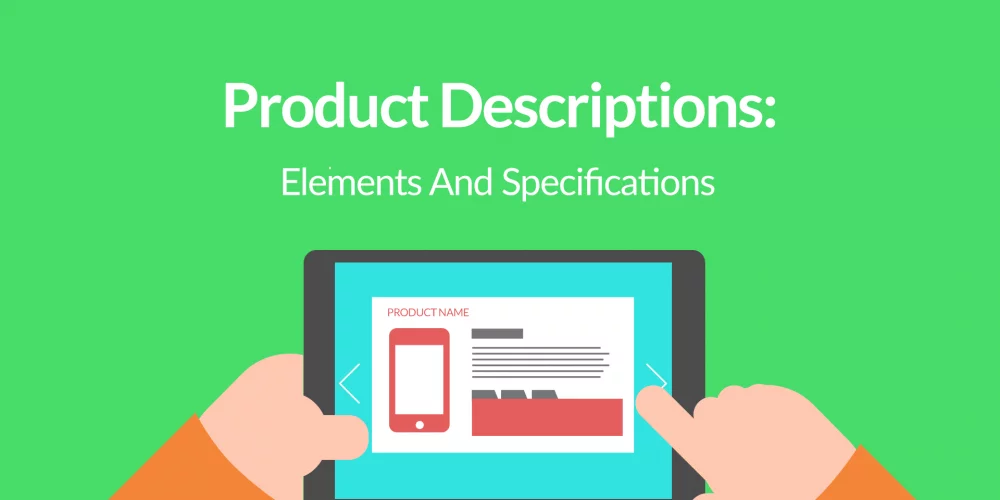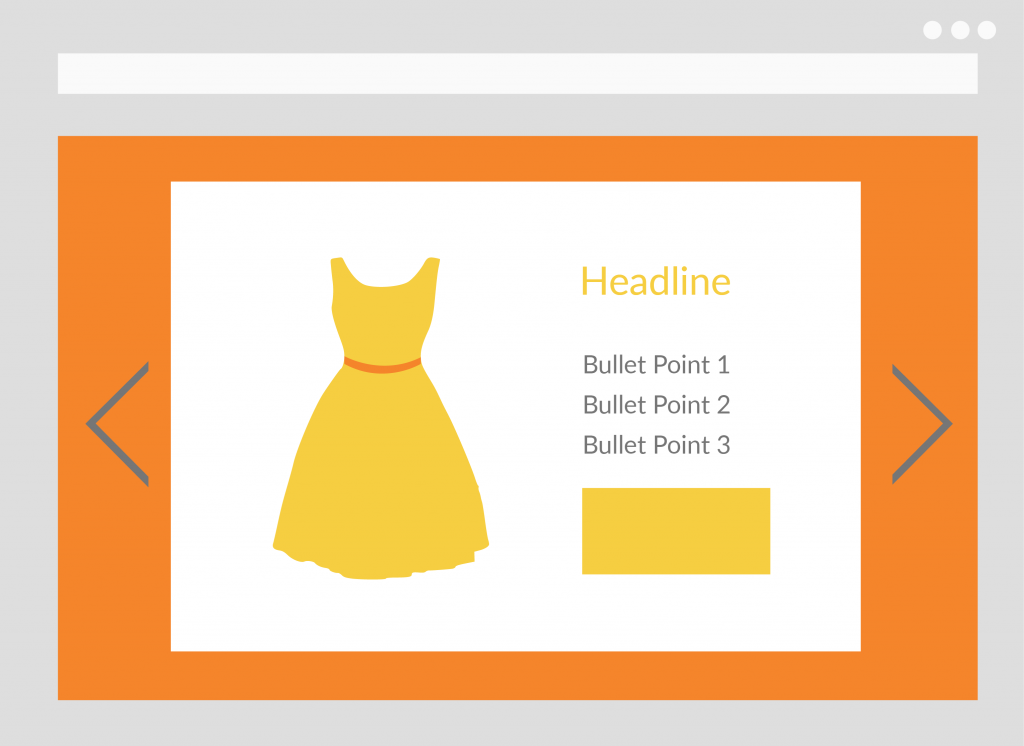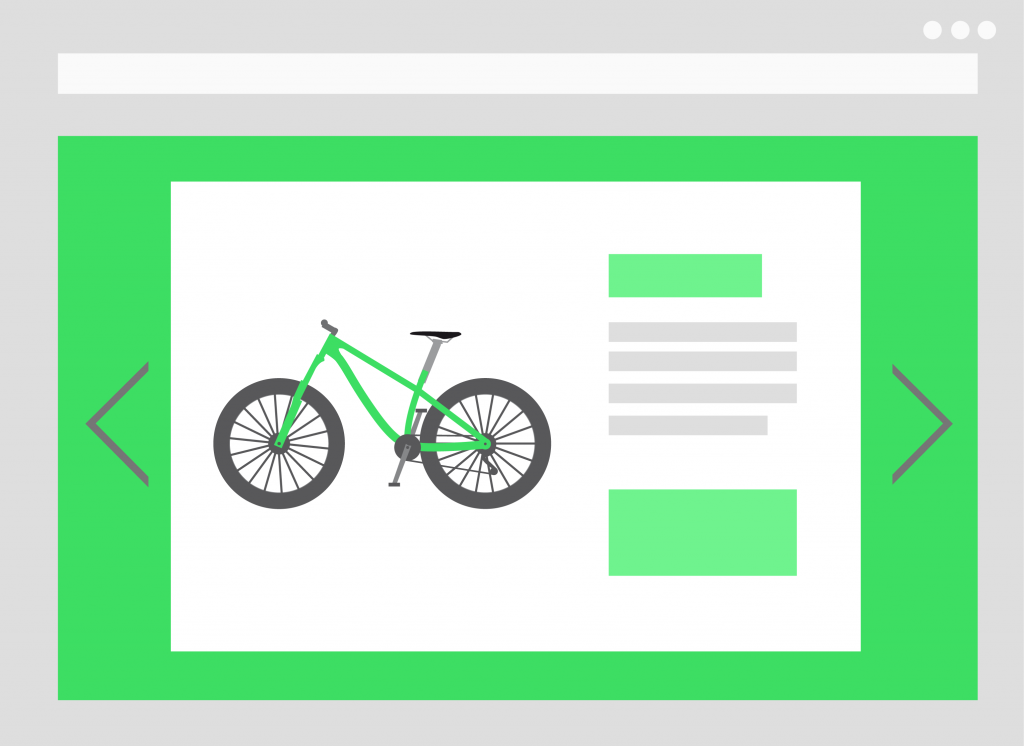Subscribe to join thousands of other ecommerce experts

No matter what you’re selling, your product descriptions have a huge impact on your bottom line. You need good photos, of course. Yet it’s equally important to provide accurate and compelling descriptions of what you want people to buy. And at this point, it is true whether your products are on your own website, Amazon, Kindle, Facebook, Pinterest or anywhere else. Let’s look at why product descriptions are so crucial and what you need to remember when writing them.
Tl;dr
- Give as much information about features and specifications as you can
- Focus on benefits and results and don’t forget about the keywords
- Use headlines, bulleted lists and be original
- Product images and descriptions should complement one another
- Use language that evokes what you want people to feel
Table of Contents
What Your Product Descriptions Need
First of all, you should be as thorough and informative as possible with your product descriptions. The only limitation is the one imposed by the platform, which might have a maximum word or character count. Don’t be stingy with words and assume that readers will fill in the blanks. It’s up to you to give them a complete picture of what you are selling. Even if you include an actual picture, you also should paint another type of picture with your words.
Features and specifications
For example, if it’s clothing, you should describe colors, sizes and styles that are available. If you write descriptions for a device, make sure to include any relevant specifications such as memory, storage capacity, RAM, megapixels or anything else that’s important to shoppers. Be sure to include all of the product’s main features. With many products, you’ll have a wide range of potential customers, some more discerning and knowledgeable than others.
For example, some people looking to buy a laptop will only look at basic features such as size, memory and what programs are included. Others, however, will want to know more details such as graphics capacity, processing speed, operating system and more. The more you include, the more potential customers you’ll be connecting with.
Try the first and only tool specially designed for Google Shopping!
Benefits and results
While you want to describe essential features, your main focus should be on results – what people will gain by purchasing the product. You should do everything you can to stimulate the reader’s imagination. If your product is a mountain bike, for example, you might discuss the types of terrain they can enjoy riding on.
You might create a whole scene, such as riding the bike on a beautiful spring day with a gentle breeze. If it’s a fashion accessory, suggest the type of places they might wear it, such as work, school, vacation, going out to clubs, etc. In this case, you also want to emphasize how stylish and attractive the piece will make the wearer feel.
Keywords
For SEO purposes, make sure you include the proper amount of keywords that potential customers might be using in their searches. Don’t overdo it, but make use of various keyword variations. When you type your main keywords into Google, you’ll get several suggestions. Also, look up similar products online and see what keywords sellers are using. We don’t write for search engines, but for humans.
Use headlines and bullet points
Longer descriptions should be scannable. That’s why you should use headlines and bulleted lists.
Be original
You should strive for originality in your descriptions. Using copies which are very similar to something used by a competitor, or even yourself in a different place, causes duplicate content issues. You want the search engines to discover each of your listings. Furthermore, you should find a distinctive voice to make the descriptions more interesting to readers.
Using Product Images With Descriptions
Product images and descriptions should complement one another. The old adage “a picture is worth a thousand words” has some truth to it, but that doesn’t mean the words aren’t important as well. Pictures give people a nice overview of the product but don’t necessarily tell them all of the necessary details. When possible, you should include multiple images showing different vantage points and aspects of your product.
Having clear and appealing images helps to induce readers into reading your descriptions. It’s always best to include pictures of people using your product in some way rather than just showing the product by itself. If it’s clothing, show people wearing it. If it’s a food, beverage or supplement, show someone consuming it. If it’s a device, show people having fun or being productive using it. Companies that showcase homes and places can also make use of this, such as Airbnb listings where people are seen enjoying the space.
Facts, Feelings and SEO
Effective product descriptions accomplish several things at the same time. They convey the facts or specifications of the product. They optimize the listing for the search engine by including relevant keywords. Just as importantly, they make the audience feel a certain way about the product. This is true for all the most effective advertising campaigns, whether product listings, TV commercials or billboards.
Think of ads for Coca-Cola, which have helped make it one of the world’s most popular beverages for many decades. The ads don’t simply tell people that Coke tastes good or has quality ingredients. On the contrary, the ads portray people having a great time. You don’t have quite the same ability to express emotions in a product description as with a commercial or video. However, you can use language that evokes what you want people to feel, whether this is happy, attractive, fit, successful or healthy.
SEO is also important, but it should really come naturally. It’s good to do some keyword research and include a few long tail and LSI (Latent Semantic Indexing) keywords for variety. However, you shouldn’t overuse keywords or make your copy sound unnatural. This will be a turnoff to readers as well as search engines. You should be writing mainly for your readers. The main advantage is that this approach will allow your descriptions to be optimized automatically. Using different keywords for variety sounds more natural. For example, in a description of a bicycle, it sounds perfectly natural to call it a bike at times.
Put Effort Into Your Product Descriptions
To make your product descriptions rock, you have to put some time and effort into them. Think of what your audience wants when buying a product such as yours. Then use language that connects your product to that feeling. You have to do this while also describing the essential features and specifications, of course. Along with images, product descriptions are one of the most important factors that cause shoppers to hit the buy button.




